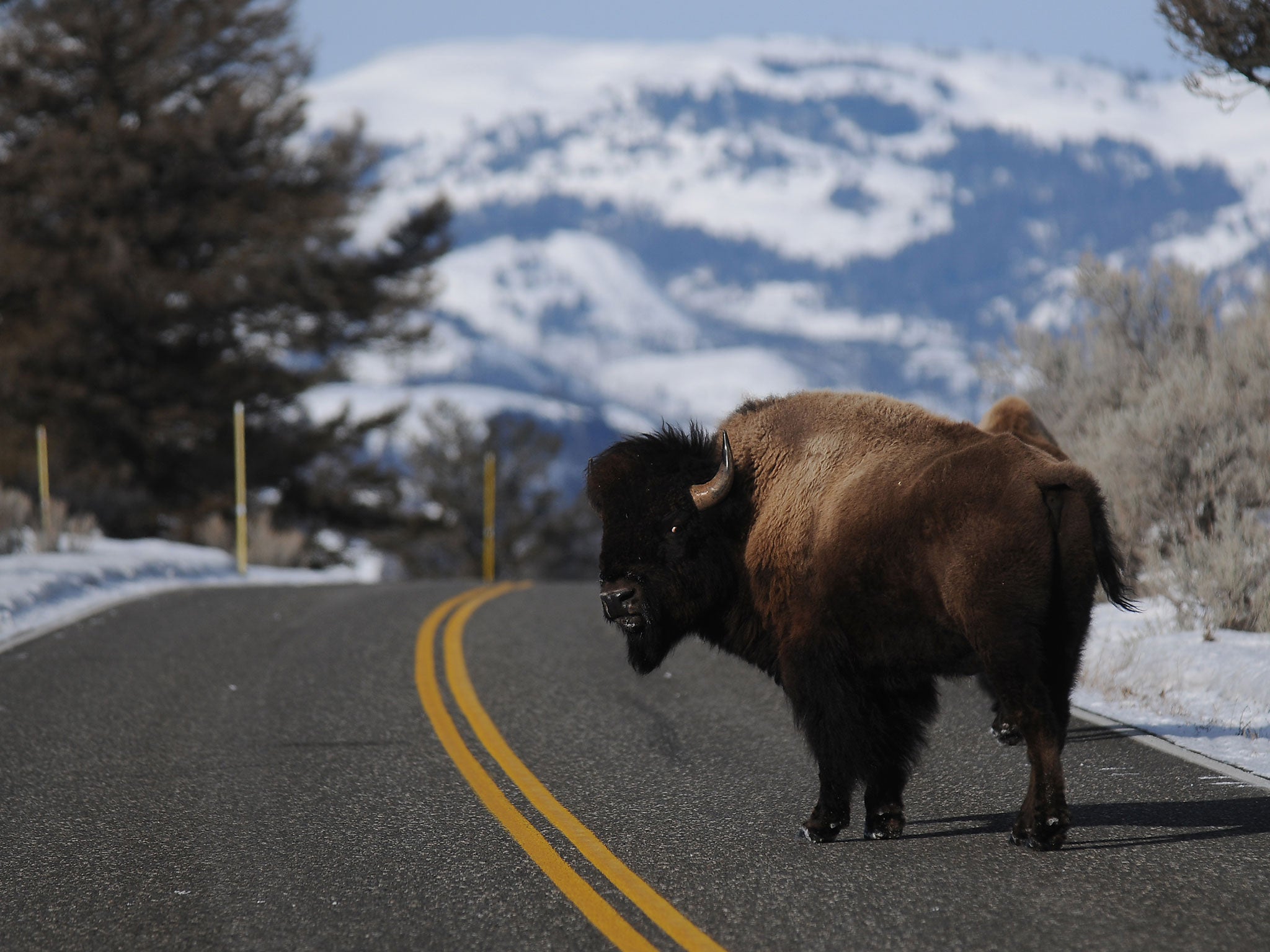Bison in Yellowstone: What can the US do with its surplus animals as herds continue to grow?
Since mid-May five visitors have been hurt - gored, trampled or tossed into the air

Even for a park with a history of unhappy encounters between people and wildlife, 2015 is shaping up as an eventful year for Yellowstone and its bison. Since mid-May, five visitors have been hurt – gored, trampled or tossed into the air – in run-ins with the park’s most famous residents.
The tourists all came away with treatable wounds. For the bison, however, the year’s brushes with humans did not always end as well. Since January, more than 500 of the woolly beasts – the most in years – have been chased on to trucks by government workers and hauled to slaughterhouses. Some 200 others that wandered off park grounds were rounded up in a similar fashion or stalked by hunters and shot. Next year’s numbers are expected to be still higher, a consequence of a surging population and strict rules that park officials themselves find difficult to carry out.
“It is hard to watch,” said Rick Wallen, Yellowstone’s lead wildlife biologist for bison, describing the methods used to capture and restrain the animals. “But we do it as quickly and efficiently as possible.”
The culling is a routine, if little-known, facet of managing Yellowstone’s roughly 4,900 bison, the biggest and wildest repository of descendants of the herds that once roamed the US plains. To keep bison numbers in check, workers spend the winter months corralling those venturing near the park’s northern entrance, keeping them in pens until they can be shipped to nearby meatpacking plants.
Yet, despite expensive control efforts, the herd continues to swell. Management plans call for capping the number of bison at about, 3,000, but the park’s population could soon approach twice that level. Restricted from relocating the animals to private lands, the park and its bison face an acute shortage of options.
Park officials are pushing for changes, including possibly easing limits on moving disease-free animals to new locations. Favouring this is a diverse coalition of groups, including wildlife enthusiasts opposed to any killing of bison and Native Americans who want to start their own herds.
The Obama administration has acknowledged the need for a major overhaul. Park officials, with heavy support from wildlife advocates, are pushing for the adoption by next year of new rules that would include alternatives to converting these wild bison into ground meat.
© The Washington Post
Join our commenting forum
Join thought-provoking conversations, follow other Independent readers and see their replies
Comments